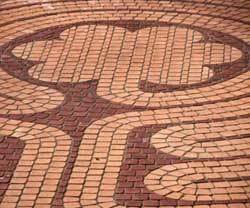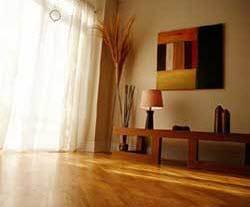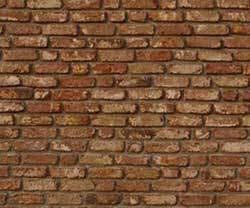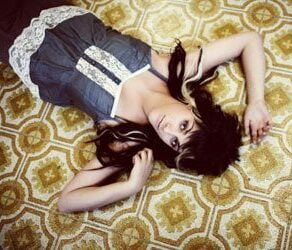Adrienne asked: How do I remove white water stains from an unsealed brick floor? The damage was from a plumbing leak under the floor (pier and beam). The two spots are about eight inches in diameter.
Brick floors are unique, durable and easy to care for. For routine cleaning, you may not need to go through every step listed, if your floors are relatively clean, simply stop at the initial steps. For a more thorough cleaning or for heavily soiled floors, work through all of them for the best results. If you’re plagued by water stains over your unsealed brick floors, you’ll find a solution below for that as well.
floors are unique, durable and easy to care for. For routine cleaning, you may not need to go through every step listed, if your floors are relatively clean, simply stop at the initial steps. For a more thorough cleaning or for heavily soiled floors, work through all of them for the best results. If you’re plagued by water stains over your unsealed brick floors, you’ll find a solution below for that as well.
Cleaning Unsealed Brick Floors
You Will Need:
- Broom or vacuum
- Mop
- Water
- Mild detergent
- White vinegar
Steps to Clean the Floor:
- Start by sweeping or vacuuming the brick to remove any loose debris.
- For a quick clean and to prevent dirt buildup, use a mop and plain water over the floor.
- If you would like a more thorough cleaning, add mild detergent to the water until its slightly sudsy. Mop the surfaces with the sudsy water.
- For a quick, polished effect, add a cup of vinegar to the water and detergent before mopping.
- After mopping with detergent or vinegar, rise the bricks well with clean water. This can be accomplished in a couple of ways, but the easiest might be re-mopping with clean water.
- Wipe dry for best results.
Removing Water Stains
White water stains on brick are usually from a process called efflorescence, or the culmination of hard water stains building up in damp areas. This technique, along with a healthy dose of elbow grease, should take care of these stains.
You Will Need:
- White vinegar
- Water
- Bucket
- Scrub brush
- Baking soda
- Towels
Steps to Remove the Stain:
- Make sure floors are clean before you begin. Use the cleaning methods above to remove any dirt or debris.
- Mix a solution of half vinegar and half water.
- Pour it onto the stain and allow it to sit for a few minutes.
- Start scrubbing the spot with the brush.
- If you see improvement, keep scrubbing until the stains are gone. If the stains aren’t budging, pour undiluted vinegar on the stain and allow it to sit for 10-15 minutes.
- Continue to scrub. Reapply the vinegar solution or vinegar as needed.
- Once the stain is gone, rinse the floor with clean water.
- Sprinkle a fine dusting of baking powder over the (still wet) spots that had been covered in vinegar. This will neutralize the effects of any remaining acid so that it does not damage the surface of the flooring.
- Wait 15-20 minutes before rinsing clean again.
- Use a towel to dry the bricks.
Additional Tips and Advice
- Choose a sturdy mop that will hold up to the rough edges on your brick floor. A sponge mop is likely to be torn apart, while a string mop should hold its own.
- Once the efflorescene has been removed and the floor is fully dry, consider sealing it to prevent its return. Efflorescene is a result of moisture contact with the floor, so protecting the floor from moisture can help to prevent it from returning. However, if the floor is sealed and it does return, you will need to strip the sealant off the floor in order to remove it again.








I have a very old cottage with a brick floor straight on the earth, and therefore not very level. Because of a fire, the bricks are extremely dirty. The builders do not want to clean them with anything that would make them wet again or cause steam in the room (it’s taken a very long time to dry the place out). Is there anything, like a sander, that could be used to clean bricks, or can you suggest a method of getting them clean? Removing them and replacing them is not an option because the cottage is listed and the “lady from listings” will not hear of it. Your advice would be appreciated.
Marion,
Use a Dry Cleaning Soot Sponge. These can be found at most hardware stores, sometimes in the wallpaper section. They are used dry and specifically work to remove soot. Good luck!
I purchased a split level home with brick floors, which covers the entire second level. I love the floors, however; a thin coating of shellac is peeling off the floors, and the grout looks very dirty in some areas. I need some advice on how to clean my floors and return them to their original beauty. Any helpful ideas would be appreciated…
D Wheeler,
This is the article you need: How to Clean and Polish Brick Flooring. See the section on Quick Stripping and Resealing/Waxing to remove the shellac.
My brick floors are not sealed and I have many stains, Mainly oil spots and a spot of hairspray. How can I remove these spots so that I can seal the floor properly?
Melody,
To remove the hairspray stain, use isopropyl alcohol. (Test it on a small hidden area of the brick first, such as along the edge near a wall or corner, to be sure it’s safe for your specific brick.)
For the oil stains, you will already have alcohol handy, so you can try making a paste of baking soda and alcohol. It should be thick, about the consistency of peanut butter or toothpaste. Spread a thick layer over the oil stains, then let the paste dry. Alcohol dries much faster than water, so it shouldn’t take long. Then, sweep up the dried powder.
If that doesn’t work, you’ll need something stronger. Use the mix in the How to Remove Oil Stains section of the guide How to Clean Exterior Brick. It’s a mix of TSP (trisodium phosphate), water, and powdered chalk. Since you’ll be using it inside, be sure to only sweep up that mixture once it’s dried; do not use a vacuum unless it has a HEPA filter – you do not want to breathe in the TSP dust.
Good luck!